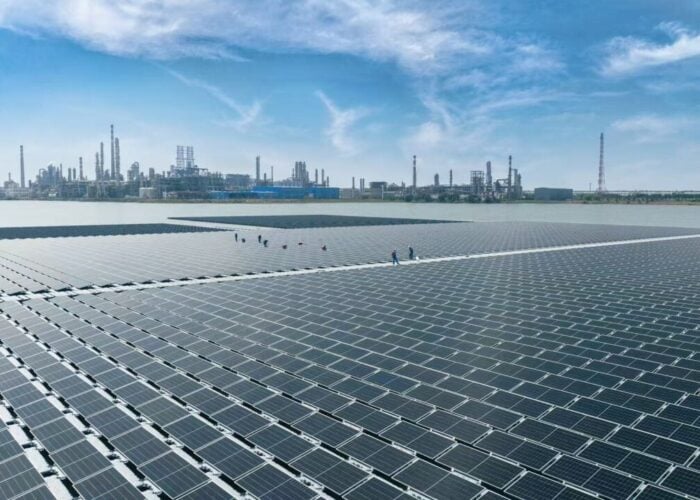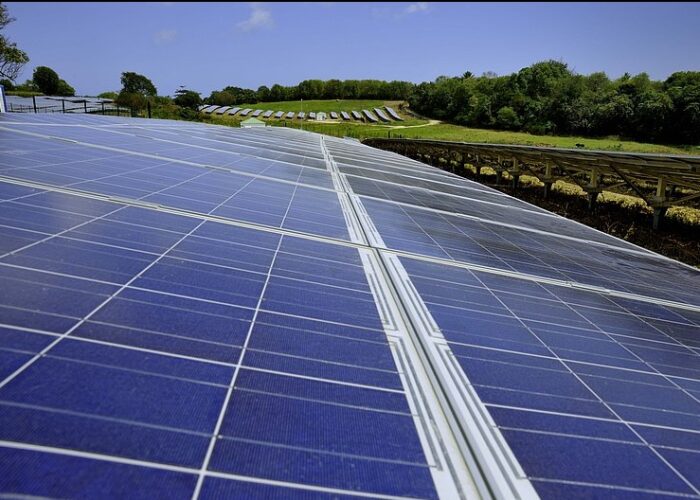In a detailed research report from Deutsche Bank, China’s PV demand, driven by the utility-scale market is growing significantly faster than previously expected.
Deutsche Bank’s research analyst, Vishal Shah, painted a scenario of the PV installations run-rate in 2014 reaching between 13GW to 15GW, up from around 6GW to 7GW expected in 2013 and ahead of the Chinese government's annual target of around 10GW.
Unlock unlimited access for 12 whole months of distinctive global analysis
Photovoltaics International is now included.
- Regular insight and analysis of the industry’s biggest developments
- In-depth interviews with the industry’s leading figures
- Unlimited digital access to the PV Tech Power journal catalogue
- Unlimited digital access to the Photovoltaics International journal catalogue
- Access to more than 1,000 technical papers
- Discounts on Solar Media’s portfolio of events, in-person and virtual
According to Shah, in a scenario where demand remains at between 6GW to 7GW per annum in Japan and expected Chinese installations in 2014 are reached, both countries combined could account for as much as 45% of global PV demand next year and could support such levels for several years ahead.
The Deutsche Bank analyst is forecasting global PV demand in 2013 to reach around 38GW and increase strongly in 2014 to as high as 45GW, with upside potential.
“We now expect additional policy measures recently announced in China to drive a structural change in the supply and demand outlook for the solar sector over the next 12-18 months,” Shah wrote in the report.
With central state and an expected stream of regional state support mechanisms for utility-scale PV projects, the downstream PV power plant project business is expected to boom as the return on investment rates are calculated by Deutsche Bank to be very attractive.
The fear of another boom and bust cycle due to manufacturing overcapacity is not expected by Deutsche Bank due to new government policies for the sector, including liquidity controls and requirements for manufacturers to meet higher conversion efficiency and R&D spending targets.
PV power plant project completion rush
Shah cites recent supply chain checks in China that show a likely rush to complete PV projects in the second half of the year to meet deadlines to obtain the attractive country-wide ¥1/kwh (~US$0.16/kWh) gross feed-in tariff that will change in 2014 to better reflect insolation levels and access to labour in the different regions of the country.
Therefore there is a potential for installations to exceed Deutsche Bank’s forecast for installations in China this year.
Bullish on polysilicon demand
Deutsche Bank noted that should the 45GW global demand forecast for 2014 prove to be too conservative, due to other regions in the world experiencing strong demand, a 50GW market next year would result in a polysilicon supply shortfall of a significant 40,000MT to 45,000MT, compared with a more manageable shortfall of around 11,000MT under Deutsche Bank’s global demand forecast of 45GW in 2014.
According to a previous report from Bernrauter Research, polysilicon surplus inventory at the beginning of 2012 was around 50,000MT and had a continued impact on ASP declines to around US$15/kg in December, 2012. Therefore polysilicon supply constraints can have a significant impact on ASPs throughout the supply chain.
However, the Deutsche Bank analyst believes that tightening polysilicon supply should lead to stable pricing and margins through 2014, though polysilicon supply could become a “primary growth constraint for companies in 2014”.
According to Deutsche Bank, China used more that 28,000MT of domestic polysilicon in the first half of 2013, while more than 38,000MT was consumed from imported polysilicon.
New duties imposed on polysilicon imported from the US and Korea are expected to result in demand for imported material to decline to around 30,000MT, while domestic consumption could rise to 30,000MT.
However, should PV demand follow Deutsche Bank’s forecast, domestic polysilicon production could supply more that 93,000MT in 2014, up from around 85,000 MT in 2013, leading to even tighter supply constraints if imported polysilicon is avoided where possible.






